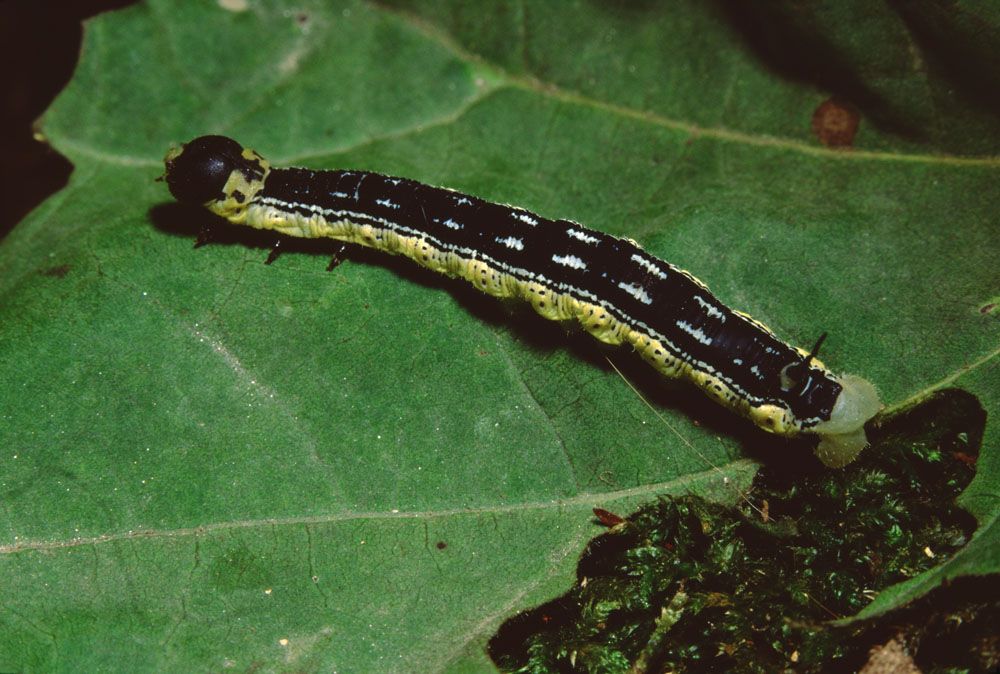
Catalpa Sphinx – Ceratomia catalpa
Catalpa Sphinx
Scientific Name: Ceratomia catalpa
Common Name: Catalpa sphinx, catalpa worm
Appearance: Catalpa sphinx larva is a pale grey to white worm with black spots and marks on the upper side. The yellow stripe on its side distinguishes it from other members of the family. It has a black, rigid horn near its abdomen. The adult is a brown moth with a total wingspan of 95 mm. Its forewings also have brown or black banding, with a pair of white antennae.
Host Plants or Food: Catalpa sphinx feeds on catalpa plants, both native as well as non-native ornamental catalpa trees.
Territory: Throughout Eastern USA and Europe
Mode of Damage: They are active leaf chewers and defoliate the catalpa trees by feeding on the foliage.
Habits and Life History:
Catalpa sphinx is found on catalpa trees and is seen from April to October, after which they go dormant for overwintering.
Eggs are laid in large numbers ranging from 100 to 1000 on the underside of the catalpa leaves. They hatch in 5 to 7 days.
The larval stage of these worms is commonly used as bait during fishing. The larva feeds on the foliage until it goes into pupation.
When it is ready for pupation, it falls to the ground, burrows a few inches into the soil and pupates in there until it becomes an adult.
Adult catalpa sphinx is attracted to light.
